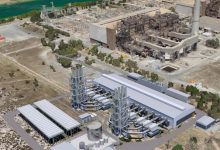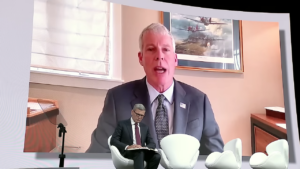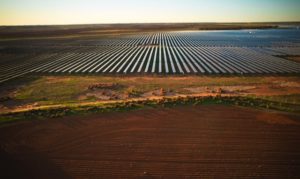While many of Australia’s states have announced concrete policies and plans to achieve deep emissions cuts in the short term on the pathway to net zero by 2050, Western Australia’s new climate policies lack sufficient ambition.
Though the state’s Labor government recently announced a relatively ambitious plan to build a long electric vehicle charging route, the state’s broader emissions footprint is likely set to exceed targets and continue rising. The Labor government recently announced a wide-ranging climate policy that included funding for a 100 megawatt battery, funding for hydrogen, climate science, adaptation and an electric vehicle strategy, but there is little detail on concrete, short-term emissions reductions, and how they differ from “business as usual” for the state.
“Without addressing the drastically rising emissions from the LNG industry, without legislated interim emissions reduction targets and renewable energy targets, and without a carbon budget, this policy provides no real strategy on how this government will effectively reduce emissions”, said WA Greens spokesperson Tim Clifford.
CCWA Director Piers Verstegen said: “WA is the only state in Australia with rising carbon pollution and this policy offers no concrete plan or targets to get this pollution under control. This undermines efforts under the Paris Agreement and could put the nail in the coffin even for Australia’s modest national emissions reduction targets.”
Interrogating the data for Western Australia’s mix of fuels in its grid, it is clear that the state has a very significant gas problem. The challenge of reducing the share from fossil gas in its grid and significantly increasing renewables is unlikely to be addressed through the addition of a single 100 megawatt battery; most other states either use a renewable target or a clear infrastructure plan to guide investment and signal change. Western Australia has neither.
https://twitter.com/KetanJ0/status/1287332871884222464
Earlier this year, the WA government released a “system plan” of sorts. The “Whole of System Planning” document, or WOSP, is a sibling to AEMO’s “Integrated System Plan”, albeit with less detail and scale.
However, it does not serve as a pathway to rapidly falling emissions; rather it simply creates a collection of scenarios that do not result in relatively significant changes, compared to the NEM’s ISP and its deep, fast emissions cuts. If we compare both to the federal government’s 2019 projections, the ISP’s scenarios are all entirely underneath the ‘business as usual’ federal projections, while the WOSP’s scenarios are all above the federal government’s projections. 
 It’s a significant finding, consider the WOSP report claims to answer the question of “•What is the trajectory for carbon emissions under current Government policy settings”. This is before other sectors are considered. Western Australia’s transport and gas-extraction related emissions are very high, and must be addressed if the state is to reach net zero, with much greater speed than is currently proposed. The State greenhouse gas inventory (SGGI) lays this out in stark terms:
It’s a significant finding, consider the WOSP report claims to answer the question of “•What is the trajectory for carbon emissions under current Government policy settings”. This is before other sectors are considered. Western Australia’s transport and gas-extraction related emissions are very high, and must be addressed if the state is to reach net zero, with much greater speed than is currently proposed. The State greenhouse gas inventory (SGGI) lays this out in stark terms:

WA’s emissions have grown so significantly that it’s likely, within a few years (perhaps even already – the state data only go up to 2018), the state’s non-land-use emissions will be greater than Victoria’s – a state with roughly three times the population. In recent years, Queensland’s emissions are rising too. Both Western Australia and Queensland are states that rely heavily on mining exports (gas for WA, and coal for Queensland), and fugitive emissions and energy used in mining account for much of the increases in recent years.
It is likely to take far more than the odd battery or charger network to get these states to zero emissions in only a few decades. Western Australia in particular has much work to do. Now that it seems the states in Australia are taking on the burden of climate leadership, much more attention must be paid to the exact level of ambition they’re engaging in, and which blind spots seem to stick around the most.










